1. Velvet
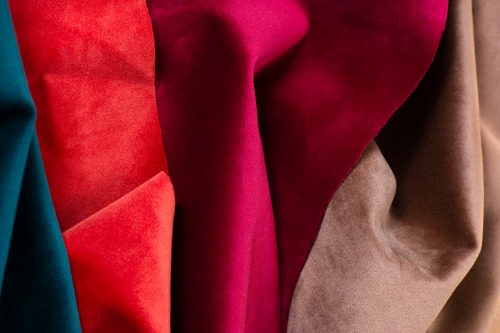
Velvet has long been associated with luxury, but designers are giving it a modern twist, using it for everything from blazers to evening dresses. Its soft, plush texture instantly elevates any outfit, creating a sense of depth and richness that few fabrics can match. Lately, jewel tones like emerald and sapphire are making velvet particularly irresistible on the runway. There’s something inherently nostalgic about velvet, which makes it perfect for designers who want to nod to vintage glamour without feeling dated.
What’s fascinating is how versatile it is: it works in casual settings as well, like a velvet bomber jacket paired with jeans. The fabric’s sheen catches light in a way that brings outfits to life, making it ideal for both day and nightwear. Designers love experimenting with prints on velvet, giving it a contemporary edge. It’s no surprise that velvet is quietly taking over high-end closets everywhere.
2. Corduroy
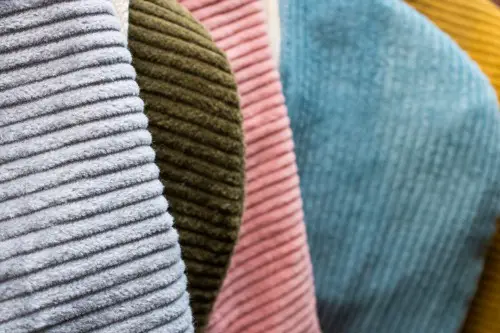
Corduroy’s ridged texture has long been considered practical rather than chic, but that’s changing. Modern designers are embracing it for structured suits, skirts, and oversized jackets, giving it a fresh, elevated appeal. The fabric’s tactile nature invites touch, which makes it feel more personal and luxurious than other cotton blends. Earthy tones like caramel, olive, and rust are especially popular, giving a subtle nod to 70s style without going full retro.
Beyond color, corduroy’s durability and warmth make it perfect for fall and winter collections. It also plays surprisingly well with layering—think corduroy blazers over silk blouses or chunky knit sweaters. Designers are also exploring wide-wale corduroy, which has a bold texture that reads almost sculptural. It’s a fabric that manages to feel simultaneously cozy and sophisticated.
3. Taffeta
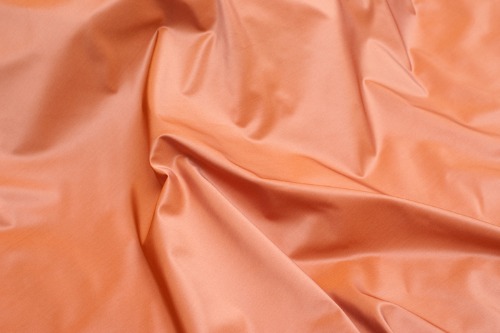
Taffeta has a crisp, slightly stiff hand that makes it ideal for structured silhouettes. It’s most often associated with ball gowns or wedding dresses, but contemporary designers are using it for skirts, blouses, and even tailored coats. Its subtle sheen adds a touch of drama without being flashy, which appeals to minimalist designers seeking elegance. The way it holds its shape allows for architectural draping that really commands attention.
Taffeta’s revival also ties into sustainability trends—vintage taffeta pieces can be reimagined for modern wear with minimal alteration. Designers are particularly drawn to its reflective quality, which plays beautifully under runway lighting. Even in muted pastels, it feels unmistakably high-fashion. It’s one of those fabrics that quietly signals intentionality and craftsmanship.
4. Chiffon

Chiffon is ethereal and light, giving any piece a floaty, romantic feel. Vintage chiffon prints are popping up in modern collections, often layered for a whimsical, airy effect. Designers love chiffon for its versatility—it works equally well in delicate blouses or full-length evening gowns. The semi-sheer nature of the fabric adds an element of intrigue, inviting layering and texture play.
Because it’s so delicate, chiffon demands careful styling, which gives designers a canvas for creativity. It also has a nostalgic appeal, reminiscent of 1940s and 50s dresses with flowing silhouettes. Light, floral prints are particularly popular, nodding to vintage femininity without feeling costume-like. Chiffon manages to be both timeless and trend-forward, making it irresistible to fashion insiders.
5. Brocade
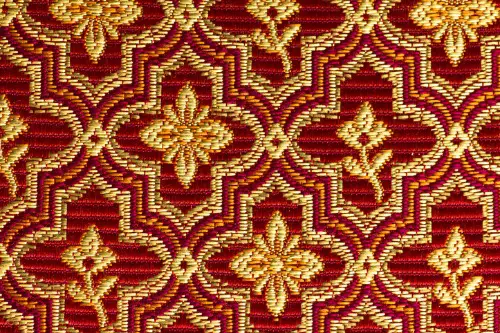
Brocade screams opulence, with its raised patterns and metallic threads catching the eye immediately. While traditionally reserved for eveningwear or ceremonial garments, designers are incorporating brocade into jackets, skirts, and even casual accessories. Its textured surface adds a tactile richness that feels luxurious in every sense. This fabric is ideal for making a statement without relying on loud colors or prints.
Brocade also offers incredible longevity—many vintage pieces look as stunning today as they did decades ago. Designers often play with scale, combining traditional motifs with modern cuts to keep it contemporary. Metallic accents make brocade a favorite for runway shows, as it gleams under stage lighting. It’s a fabric that communicates both history and high style effortlessly.
6. Lace
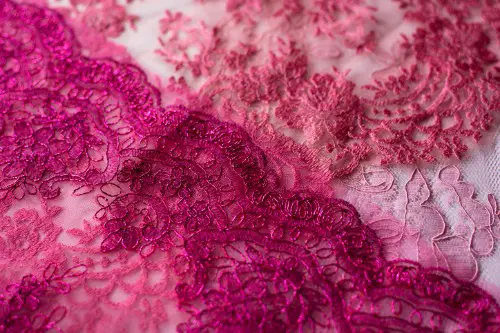
Lace has an intricate, handcrafted appeal that never goes out of style. Designers are taking vintage lace patterns and reimagining them in modern silhouettes, from tailored dresses to delicate tops. Its see-through quality allows for creative layering, making it surprisingly versatile despite its delicate reputation. Lace’s romantic, old-world charm is perfect for designers looking to merge nostalgia with innovation.
What’s intriguing is how lace can be both subtle and dramatic, depending on color and placement. Off-white, black, and jewel-toned lace are particularly popular in recent collections. Designers are also experimenting with mixing lace with contrasting fabrics like leather or denim. It’s a fabric that balances femininity with modern edge.
7. Tweed

Tweed may bring to mind classic British tailoring, but it’s found a new life in contemporary fashion. Designers are embracing bold colors, oversized silhouettes, and even unconventional layering with tweed. Its coarse texture gives garments a sense of durability and structure while maintaining visual interest. Patterns like houndstooth or plaid are getting refreshed with unexpected color combinations.
The beauty of tweed lies in its versatility—it can anchor a casual outfit or elevate formal wear. Designers are also loving its mix of texture and pattern for accessories like bags and shoes. Vintage tweed pieces are particularly sought after, as the material wears beautifully over time. It’s a fabric that conveys sophistication without trying too hard.
8. Denim
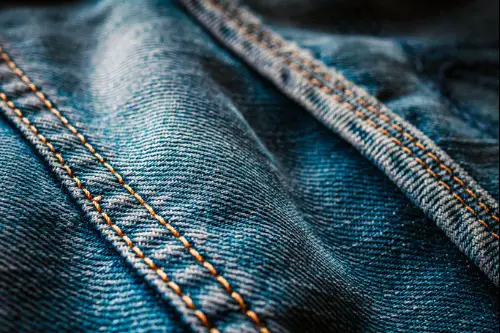
Denim’s resurgence in high fashion has been steady but stealthy, moving beyond casual jeans into runway-ready suits and dresses. Vintage washes and unique stitching patterns are inspiring new collections, offering a nostalgic yet modern feel. Designers are experimenting with tailoring, fraying, and patchwork to make denim feel elevated. Its durability and familiarity make it an approachable luxury fabric.
One of the charms of denim is its versatility—it can look edgy or refined depending on cut and finish. Raw and selvedge denim are particularly prized for their quality and authenticity. Designers are blending denim with unexpected materials like silk or leather to keep it fresh. It’s a fabric that resonates with both tradition and innovation.
9. Silk
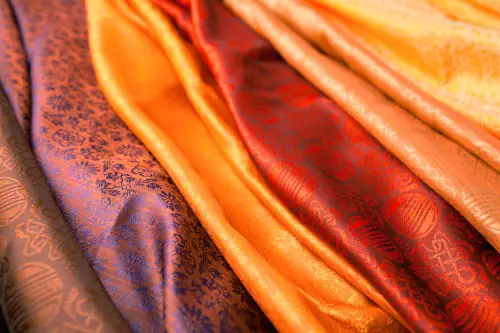
Silk has always been synonymous with elegance, but designers are diving into vintage silk patterns for a renewed sense of individuality. From printed blouses to flowing skirts, silk’s smooth texture and natural sheen give every piece a sense of effortless luxury. Its lightness allows for movement, making it perfect for fluid silhouettes. Designers are also drawn to its ability to absorb color beautifully, resulting in vibrant, lasting hues.
Vintage silk scarves and garments often inspire modern cuts and layering techniques. Designers are particularly interested in subtle prints—florals, paisleys, and geometrics—that feel retro yet timeless. Silk’s versatility extends beyond clothing to accessories like belts, ties, and headwear. It’s a quiet but powerful statement fabric that conveys refinement without needing embellishment.
10. Satin
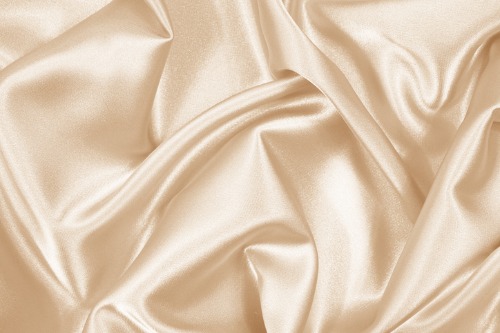
Satin’s glossy surface makes it irresistible for eveningwear, but designers are using it in unexpected ways for daywear too. Its fluidity allows garments to drape elegantly, while the shine adds a sense of drama. Satin has a vintage glamour factor that designers are embracing, often through retro-inspired dresses and skirts. The fabric’s reflective quality can turn a simple silhouette into something spectacular under the lights.
What makes satin particularly trendy is its ability to mix high and low—pairing a satin blouse with casual denim or sneakers feels effortlessly chic. Designers are also layering satin with matte fabrics for contrast, adding dimension to looks. The sheen also accentuates pleats and gathers, giving garments dynamic movement. It’s a fabric that makes even understated designs feel special.
11. Houndstooth
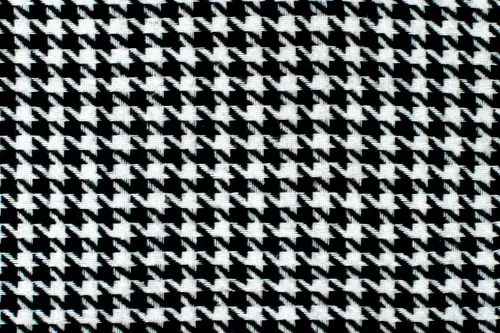
Houndstooth is a classic pattern that’s making a serious comeback, appearing on everything from coats to handbags. Designers are modernizing it with bold colors, oversized prints, and unexpected silhouettes. The geometric pattern adds instant sophistication and can anchor an outfit without overwhelming it. Its vintage roots give designers a rich palette to play with, merging tradition with contemporary styling.
Houndstooth works across textures too, from wool to leather, giving it surprising versatility. Designers are often pairing it with minimalist pieces to let the pattern shine. Accessories in houndstooth are especially trendy, adding a nod to vintage fashion without committing to a full garment. It’s a pattern that balances nostalgia with wearable innovation.
12. Mohair
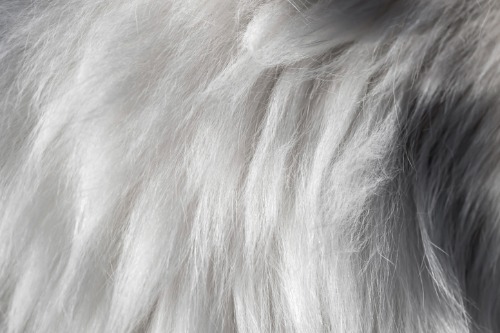
Mohair is having a subtle but notable moment, especially in cozy, oversized sweaters and fuzzy coats. Its soft, silky halo creates a warm, tactile experience that feels luxurious against the skin. Designers love it for its ability to add texture without bulk, making even simple silhouettes visually interesting. Pastel shades and muted neutrals are popular, giving mohair a dreamy, almost whimsical vibe.
The fabric also has an artisanal appeal, often associated with carefully crafted vintage garments. Mohair’s lightweight warmth makes it perfect for layering without feeling heavy. Designers are pairing it with tailored pieces to create unexpected contrasts between fuzzy and structured textures. It’s a fabric that embodies comfort and sophistication in equal measure.
This post 12 Vintage Fabrics That Are Quietly Becoming Designer Obsessions was first published on Greenhouse Black.
